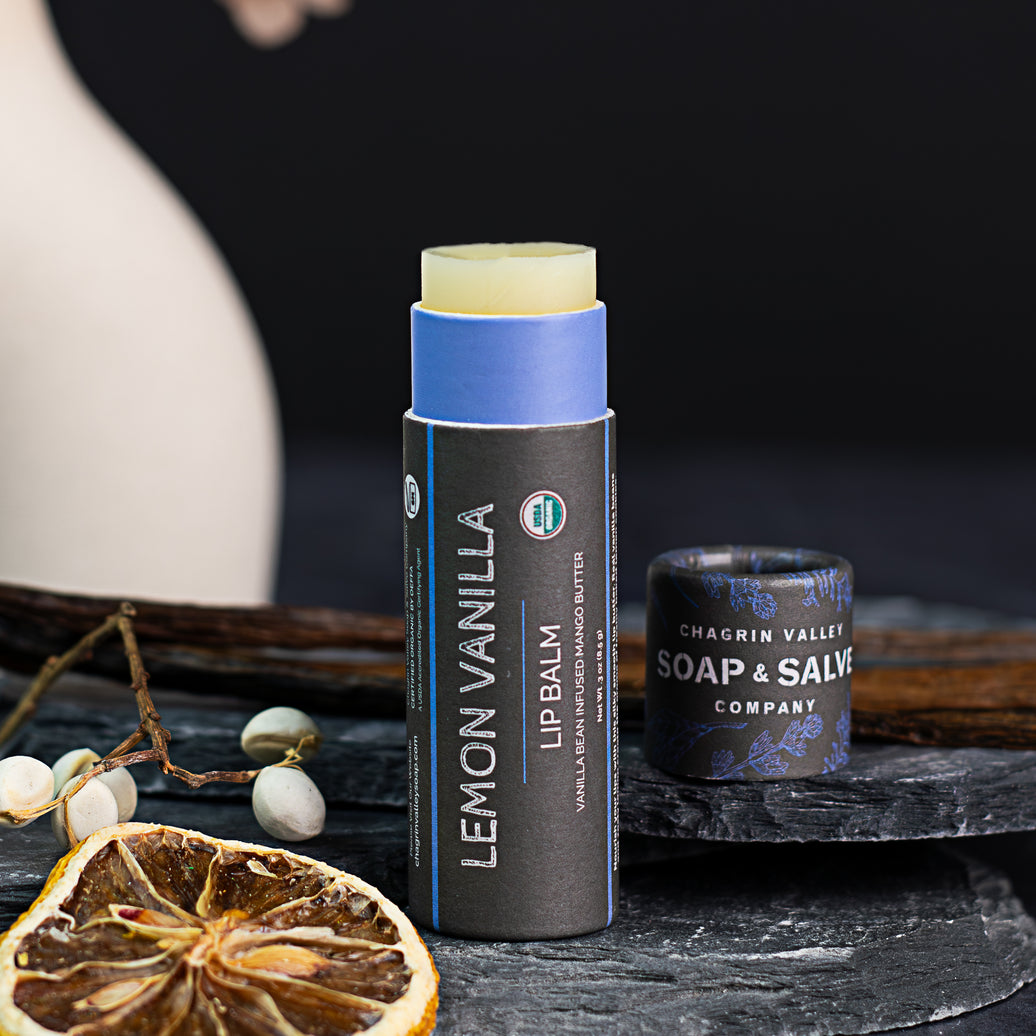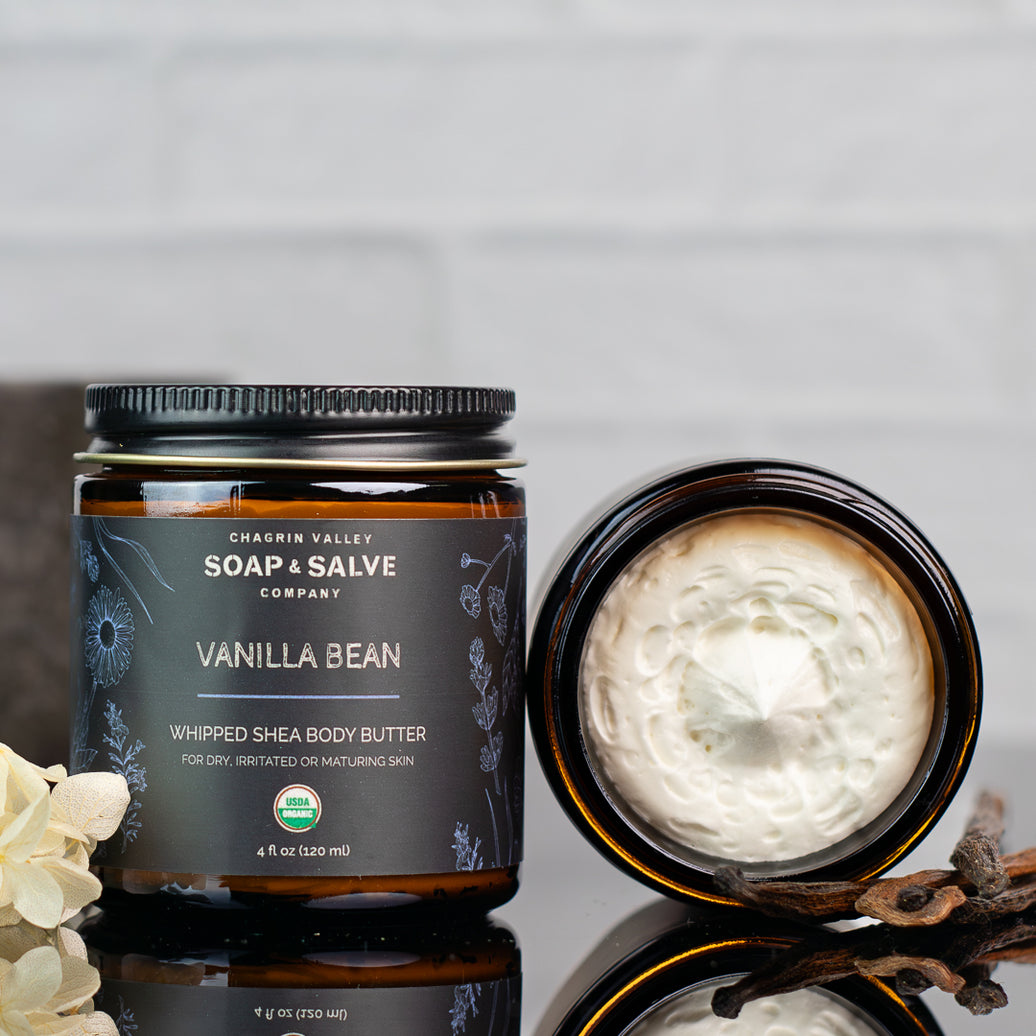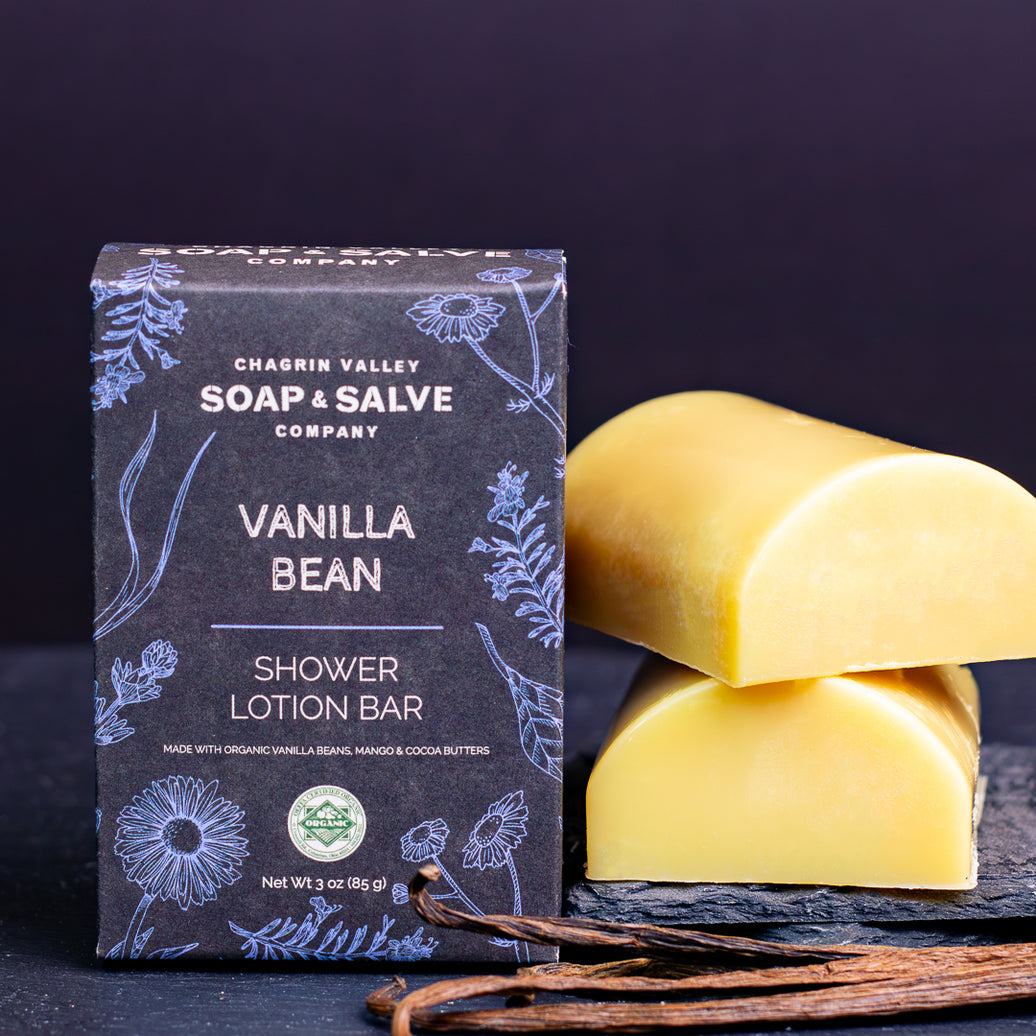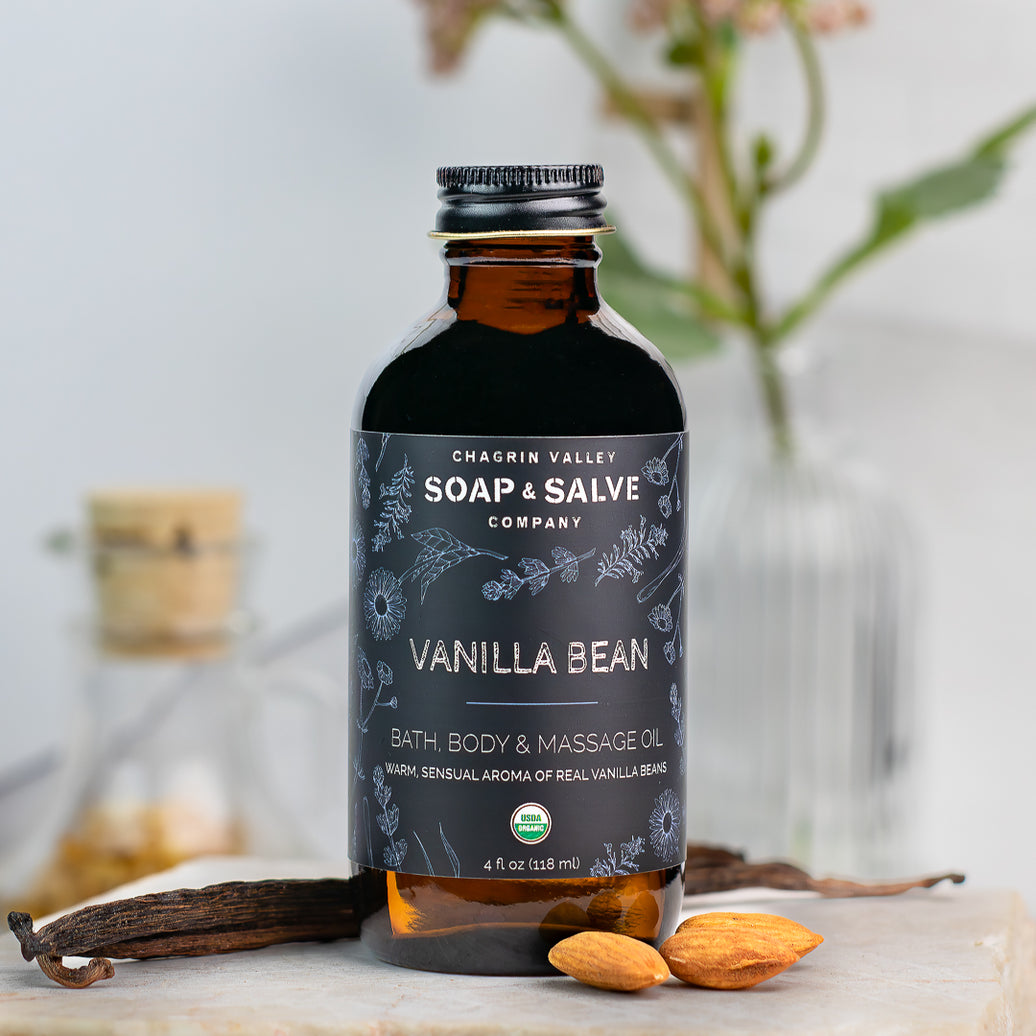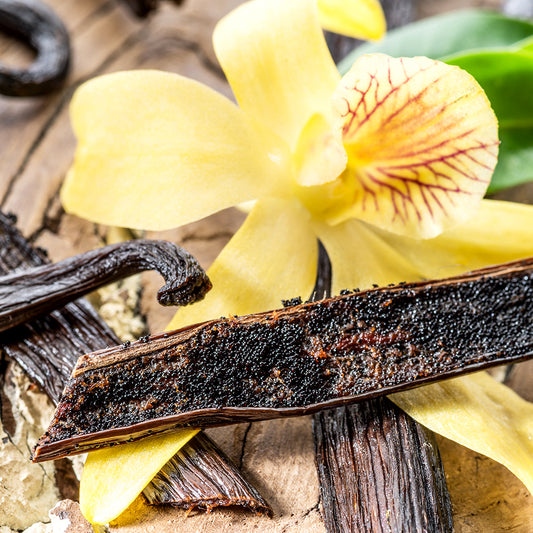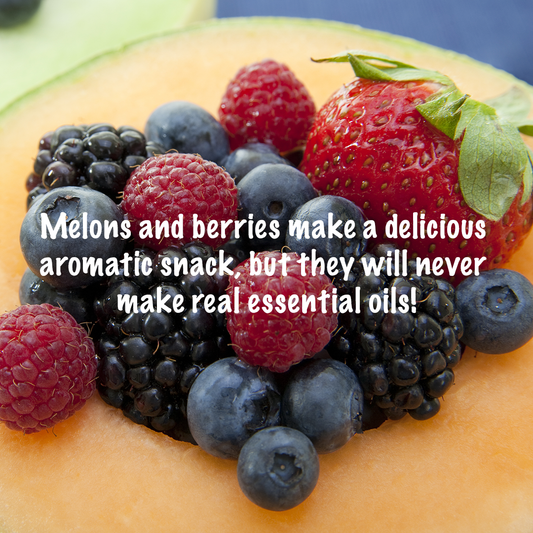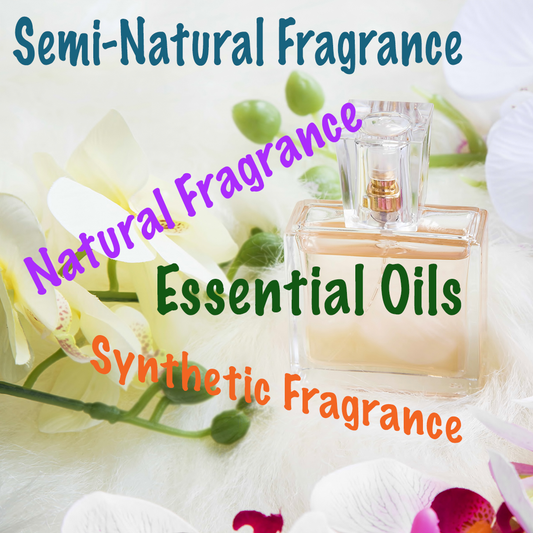Vanilla Essential Oil? No Such Thing!
 Vanilla is one of the most popular flavors and scents. The rich, warm, sweet, comforting aroma is so complex it is difficult to describe. When I smell real vanilla it reminds me of homemade cookies.
Vanilla is one of the most popular flavors and scents. The rich, warm, sweet, comforting aroma is so complex it is difficult to describe. When I smell real vanilla it reminds me of homemade cookies.
When we began creating vanilla scented products using real vanilla beans, I started reading labels on vanilla scented personal care products. I was curious as to what vanilla “flavoring” was being used.
What surprised me was how many products claimed to be made with “vanilla essential oil.”
Why was I surprised?
Because there is no such thing as "vanilla essential oil.”
There are vanilla extracts, vanilla infusions, vanilla absolutes, and vanilla fragrance oils, but no true vanilla essential oil!
Before I explain let’s talk a bit about the vanilla bean.
The Vanilla Bean Saga
 Vanilla is the fruit of an orchid plant that grows as a vine. The vine produces long stringy, seed pods which are the vanilla beans.
Vanilla is the fruit of an orchid plant that grows as a vine. The vine produces long stringy, seed pods which are the vanilla beans.
The Vanilla genus has over 100 species, but the main species responsible for 99% commercial vanilla flavoring is Vanilla planifolia or Flat-Leaved Vanilla. Although it is native to Mexico, the world's largest producers of vanilla are Madagascar and the island of Réunion.
The distinct flavor of vanilla comes from the fruit or bean pod, but the story of the bean begins with the greenish-yellow orchid blossom. One blossom will produce one bean. The blossom, which opens for only one day for a few hours, must be pollinated in order to produce fruit.
When the first vanilla orchids were brought to Europe, the vines would grow and produce flowers, but no pods. Unfortunately, this orchid has only one natural pollinator -- a small bee native to Mexico.
In 1841, a 12 year old slave named Edmond Albius developed a way to hand-pollinate vanilla, which revolutionized the cultivation of vanilla and made it possible to grow vanilla beans in other tropical climates away from Mexico.
Even today, the plants must be hand-pollinated or there will be no vanilla bean so, manual pollination method of Edmond Albius continues to be used.
After pollination, the beans take six weeks to reach full size and an additional nine months to mature. The beans, each of which contains thousands of tiny seeds, are hand-picked while still green and have to cure for about six more months before they have the characteristic aroma and flavor of vanilla.
During the curing process, the beans are laid out in the Sun during the day and then, while warm, are wrapped in blankets and allowed to sweat overnight. This process causes the beans to shrink and concentrate their flavors.
So, Why No Vanilla Essential Oil?
The International Organization for Standardization, headquartered in Geneva, Switzerland, defines an essential oil as . . .
"a product obtained from a natural raw material of plant origin, by steam distillation, by mechanical processes from the epicarp [rind or peel] of citrus fruits or by dry distillation, after separation of the aqueous phase – if any – by physical processes."
Basically, this means that true essential oils must be extracted by physical means only—no solvents of any kind.
 Aromatic essential oil compounds are stored in tiny pockets in plant material and must be extracted to be used.
Aromatic essential oil compounds are stored in tiny pockets in plant material and must be extracted to be used.
The oil is ‘essential’ in the sense that it carries a distinctive scent, or essence of the plant.
There are several types of physical extraction methods that are allowed for essential oil production such as steam distillation or cold pressing.
The type of plant material (leaves, flowers, roots) being used determines which method of extraction will produce the best results.
The aromatic compounds of the vanilla bean cannot be obtained through distillation or mechanical means. Vanilla beans cannot tolerate the heat required for steam distillation, and mechanical pressing will not produce any oil.
Vanilla beans need a solvent in order to release their aromatic compounds! Therefore, they cannot be called essential oils.
Learn More Blog: How Essential Oils Are Extracted
What Are These So-Called “Vanilla Essential Oils?”
If you do a quick search for “Vanilla Essential Oil,” unfortunately you will find numerous products labeled that way. Although Vanilla essential oil does not exist, there are vanilla aromatics and flavoring which come from real vanilla beans.
What are these products?
Pure Vanilla Extract
Vanilla extract is the most common form of vanilla used today. There are two types of vanilla extract found in the grocery store, “Pure Vanilla Extract” and “Imitation Vanilla Extract” (discussed later)
 Pure Vanilla Extract is made by soaking chopped vanilla beans in an alcohol solution and aging them for several months to “extract” all of their flavor compounds.
Pure Vanilla Extract is made by soaking chopped vanilla beans in an alcohol solution and aging them for several months to “extract” all of their flavor compounds.
It is actually the only "flavoring" that is regulated by law. In the US, in order for a vanilla extract to be called “pure,” the Food and Drug Administration (FDA) requires the vanilla extract to contain 13.35 ounces of vanilla beans per gallon of alcohol and be 35% alcohol. While the FDA limits other ingredients outside of vanilla beans and alcohol, it does allow sugars and corn syrup to sweeten the flavor.
Pure vanilla extract is expensive. Beware of bargain brands, they are usually adulterated. To get the best high quality vanilla extract read the label. The ingredients should only list vanilla beans, alcohol, and water, with no additives like sugar or artificial colors or flavors. Because vanilla extract is made by extracting the vanilla flavor with alcohol, it is very different from an essential oil and should not be used in the same way. Vanilla extract is great for baking, but not for personal care products.
Vanilla Bean Oil Infusion
Steeping vanilla beans in oil produces an excellent aromatic oil. We use vanilla bean oil infusions for our vanilla bean products. We steep organic vanilla beans in organic oils for weeks, until the aroma is perfect. Organic whole vanilla beans are very expensive (range between $250.00 to $400.00 a pound). The oil infusions have a rich, warm, sensual aroma that holds up beautifully in lip balms, creams, and scrubs.
Aromatic Vanilla Types
While there is no such thing as vanilla essential oil, there are rich, warm aromatic vanillas used in cosmetics and perfumery such as Vanilla Oleoresin, Vanilla Absolute, and Vanilla CO2 Extract. Each is made in a slightly different way.
Vanilla Oleoresin
Vanilla oleoresin is a semi-solid concentrate made by removing the solvent from pure vanilla extract. It is much thicker than a typical essential oil. Vanilla oleoresin is used in non-food products and unlike essential oils, it does not dissolve properly in carrier oils. It dissolves best in water or alcohol.
Vanilla Absolute
Aromatic, concentrated oils from plants extracted by means of a solvent are referred to as “absolutes.” Common absolutes made from delicate plant matter include jasmine and rose absolute.
Vanilla absolute is the most concentrated form of vanilla. It is very expensive and often used in perfumes and other aromatic products.
Absolutes require the use of a solvent in order to extract the aromatic material. Since the solvents used to produce absolutes are usually synthetic, it is best to check with your supplier to find out what specific solvent was used.
Vanilla CO2 Extract
CO2 oils are extracted using carbon dioxide under high pressure. Although CO2 is technically a solvent, there will be none remaining once it is turned from a liquid back into a gas.
Vanilla Without Vanilla Beans
 Vanilla is one of the most popular scents and one of the most expensive. As a result, there are a number of vanilla scents and flavorings that are made with no real vanilla.
Vanilla is one of the most popular scents and one of the most expensive. As a result, there are a number of vanilla scents and flavorings that are made with no real vanilla.
Imitation Vanilla Extract: 99% percent of the vanilla we use today is imitation.
So basically only 1% of the vanilla we use actually comes from vanilla beans. Instead, it is made from synthetic vanillin. Vanillin is the compound that naturally occurs in vanilla beans and gives it that distinctive flavor.
Synthetic Fragrance Oil: Some "vanilla essential oils" are nothing more than synthetic fragrance oils. Vanillin can be easily and inexpensively synthesized in a lab.
Vanillin Without Vanilla Beans: Vanillin naturally occurs in vanilla beans, however we can also make vanillin without using a single bean. Vanillin can be extracted from "natural" sources, like spices that contain eugenol (cloves, nutmeg and cinnamon).
Coal tar and wood pulp have also been used in the past. Vanillin can even be extracted from the scent glands of beavers. In 2007, Maya Yamamoto won the Ig Nobel Prize in Chemistry (a spoof of the Nobel Prizes) for discovering how to extract vanilla flavoring from cow dung.
Vanilla is Expensive
Since growing vanilla beans is so labor-intensive, it is the second most expensive spice after saffron.
The approximate cost of vanilla absolute:
Organic Ethyl Alcohol extracted ($386.00 for 1 ounce)
Organic Carbon Dioxide (CO2) extracted ($530.00 for 1 ounce)
Looking at the prices above, you have to ask yourself, "How can a company make a product with real vanilla and not charge more?"
 Caution should be given to any company that claims to offer Vanilla labeled Pure Essential Oil. Companies selling products claiming to contain "vanilla essential oil" are either intentionally misleading their customers or simply do not understand that "vanilla essential oil" does not exist.
Caution should be given to any company that claims to offer Vanilla labeled Pure Essential Oil. Companies selling products claiming to contain "vanilla essential oil" are either intentionally misleading their customers or simply do not understand that "vanilla essential oil" does not exist.
Why is there so much confusion? Because there is no true regulatory standard governing the use of the term "essential oil," companies have the freedom to label their products incorrectly.
So, if you want to be sure to get what you expect, do some research, deal with companies you know you can trust, ask questions and find out whether the company has any oversight that ensures quality.
When shopping for essential oils be sure to check out the method of and the botanical name.
This information is crucial in determining if the product is in fact an essential oil.
Why No Vanilla Soap?
I recently received an email asking why we had so many new vanilla products, but no vanilla natural soap.
We have tried using our vanilla-infused oil, but the vanilla scent did not come through. Using organic CO2-extracted vanilla absolute could be an option, but it is very expensive and will not produce a lasting vanilla scent in cold process soap.
Chagrin Valley skincare products made with Organic Vanilla Bean Infusions:

Why Vanilla Beans Are So Expensive?
Why We Use Only Real Plant Essential Oils?
How Essential Oils Are Extracted
Why Are Synthetic Fragrance Oils So Popular?
Natural Fragrance Oil? . . . Really?
